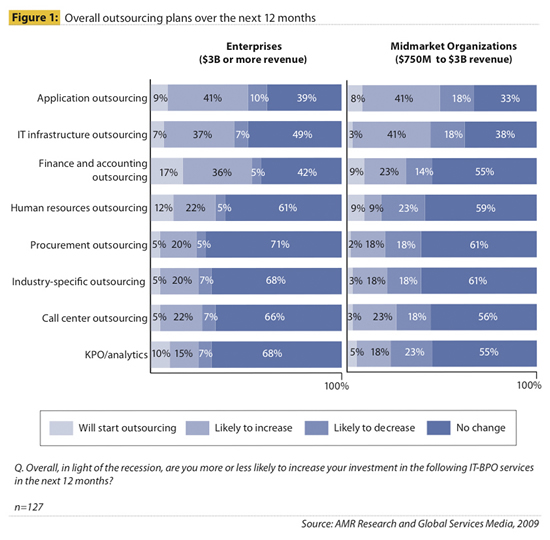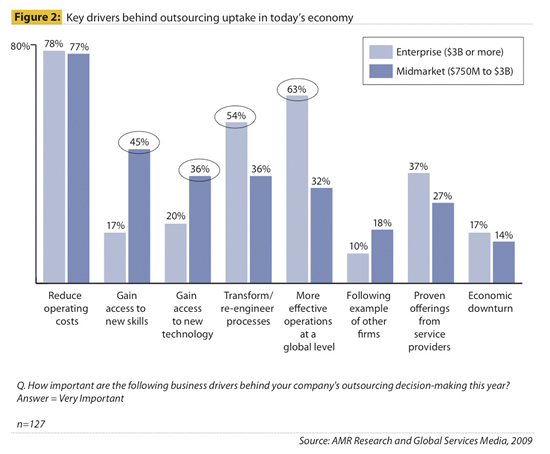Changes in technology and the business landscape can necessitate implementing strategic changes for a company to remain competitive. Add new government regulations, and you have a good reason to outsource.
The Equity Insurance Group is one of the five largest vehicle insurers in the UK. Headquartered in Essex and founded in 1946, Equity recognized the need to change its back-office functions in 2002. “The entry of new players into the UK insurance industry coupled with the introduction of new technology resulted in a change in customer loyalty and buying behavior patterns. In addition, the government introduced more stringent regulations,” says John Josiah, senior executive, Equity Insurance Group. “These changes pressured insurers like us to not only reduce cost but also deliver higher levels of customer service.”
Coming out of the economic downturn of 2001, Equity recognized a changing business landscape. Josiah emphasizes his company chose a holistic strategic approach to outsourcing that goes beyond cost savings. “We adopted business process outsourcing as part of our operating model in 2002 to improve efficiencies, rationalize costs, and enhance competitiveness,” he explains.
“People have targets on their backs,” observes Dana Stiffler, research director for AMR Research. “People are tactical and cost focused because they want a quick, immediate hit to their expenditures. But in order to really be successful, they have to inject long-term improvements in efficiencies into the engagement.”
Businesses need to be proactive not just reactive
Figure 1, from the July 2009 AMR Research report, “State of the Outsourcing Industry in Mid-2009: Activity To Resume With a More Cautious and Global Focus,” indicates that finance and accounting outsourcing (FAO) is the area with the highest percentage of respondents who indicated they will outsource.

Stiffler points out that while cost reduction is the primary consideration for big enterprises and the mid-market, the secondary factors vary, as indicated in Figure 2. “Our data shows that clients that have another key driver for outsourcing in addition to cost cutting are the ones that are most successful. Mid-market clients in particular may not have the scale to get the percentage of cost savings that the large enterprises do. They need to have other important reasons for accessing a provider such as access to skills.”

Incremental steps to success
“We evaluated a number of providers before deciding to partner with WNS,” says Josiah. “We were impressed with their commitment to our business, their understanding of the insurance industry, and their strong, proven operational capability, he explains.
The insurance company began its journey into outsourcing in 2002 with a pilot of 25 people. It signed a five-year contract based on the successful pilot, which it renewed for another five years in 2008.
WNS provides a suite of underwriting, claims administration and broking operations (data-only) processes for Equity that includes:
Underwriting process:
- Setting up policies
- Issuing policy certificates and schedules
- Updating the UK Motor Insurance Database
- Amending policies when required
- Writing renewals
Claims administration:
- Claims Bordereaux (aggregated batch payments to a single vendor)
- Indexing and referencing
Support of broking operations:
- Issuing quotations for new business
- Setting up new business
- Issuing policy documents and schedules
- Amending policies when required
- Writing renewals
When a customer initiates contact on the Web site or e-mail, or an insurance broker contacts the company, the new data and information goes to the provider where the services are performed. The carrier’s in-house team receives more complex issues. The internal staff can devote its efforts to exception-based cases outside of normal parameters since the provider is handling the routine work.
The number of business processes WNS delivers increased from 19 to 98 in six years, while the corresponding range of work evolved from simple transaction processing to more complex work, Josiah states. WNS also started undertaking more value-added management information reporting and analytic work. It also now assists with ad-hoc project work.
The success of the engagement involved formulating a dynamic incremental roadmap (the plan specifying the order of process the buyer will transfer.) The success of the methodology and improvements in efficiency has led to WNS playing an increasingly greater role over time.
Making the relationship work
Success involved extensive collaboration and interaction between the two parties to manage the relationship. “One of the key things is to have dedicated management. Equity has an offshore services manager to liaise with us in the UK,” stresses WNS senior vice president insurance sales, Jeremy Owenson, who is also based in the UK. “I like to meet with the heads of the functional units at least once a month to have a high-level strategic conversation.” By meeting face to face, the two parties are better able to understand and manage the engagement.
The Equity offshore services manager and team visit India at least once a quarter to have an on-site review meeting, says Owenson. In addition, WNS brings its senior management and operations team from India to the UK to meet with Equity for a week. “The visits help us understand their requirements by reviewing the onshore process,” he says.
“Physically meeting together really establishes the relationship,” Owenson points out. “It also provides a joint review to discover how we can work better together.”
An example is how the two worked together to reduce the percentage of referrals back to the UK. When WNS took over the fleet processes involving companies owning large numbers of vehicles, there was a six percent referral rate back to the underwriter. “We have gotten that rate down to one percent by improving our processes and better understanding their rules,” explains Owenson.
The two parties have prospered with properly designed SLAs. The original metrics and KPIs (key performance indicators) remained intact when the two partiers renewed the contract last year. “We have a mechanism in place for reviewing KPIs and all SLAs on an annual basis,” says Josiah.
Stiffler says providers that help clients manage their KPIs tend to have better relationships. “One of the things an established provider can do is create the right expectations on time frames. They need to share what is possible as opposed to pipe dreams. And they need to explain some benefits may be some years out,” Stiffler explains.
The parties made no modification to their metrics and KPIs when they renewed the contract, but they did introduce a gain-share mechanism “to incentivize further productivity/efficiency improvements,” Josiah adds. “We put at risk some of our profit margin where we fail to meet our service levels or KPIs,” explains Owenson. “We also have a monetary incentive to achieve more than the levels stipulated by our KPIs.”
Business benefits
Equity has benefited from reducing costs. Josiah says, “In our experience, outsourcing typically provides an approximate 35-40 percent saving on pre-outsourced costs.”
In addition, WNS delivered benefits by consolidating and standardizing business processes and improving process efficiencies, he adds. Benefits include:
- Customer inquiries: WNS answers them now within 24 hours with an accuracy rate of over 98 percent
- Average handling time for inquiries: WNS improved them by a range of 10-15 percent through the creation of ready reference files
- Staff cross-training: WNS optimizes the buyer’s ability to support a dynamic business environment
Lessons from the Outsourcing Journal:
- Developing a roadmap to transition processes over time yields enhanced business benefits.
- Pilot programs allow the buyer and provider to make adjustments to improve efficiencies before transitioning the entire process.
- Increased communication and face-to-face visits facilitate greater understanding of business objectives and opportunities in offshoring relationships.
About the Author: Ben Trowbridge is an accomplished Outsourcing Consultant with extensive experience in outsourcing and managed services. As a former EY Partner and CEO of Alsbridge, he built successful practices in Transformational Outsourcing, BPO, Cybersecurity assessment, IT Outsourcing, and Cybersecurity Sourcing. Throughout his career, Ben has advised a broad range of clients on outsourcing and global business services strategy and transactions. As the current CEO of the Outsourcing Center, he provides invaluable insights and guidance to buyers and managed services executives. Contact him at ben.trowbridge@outsourcingcenter.com.